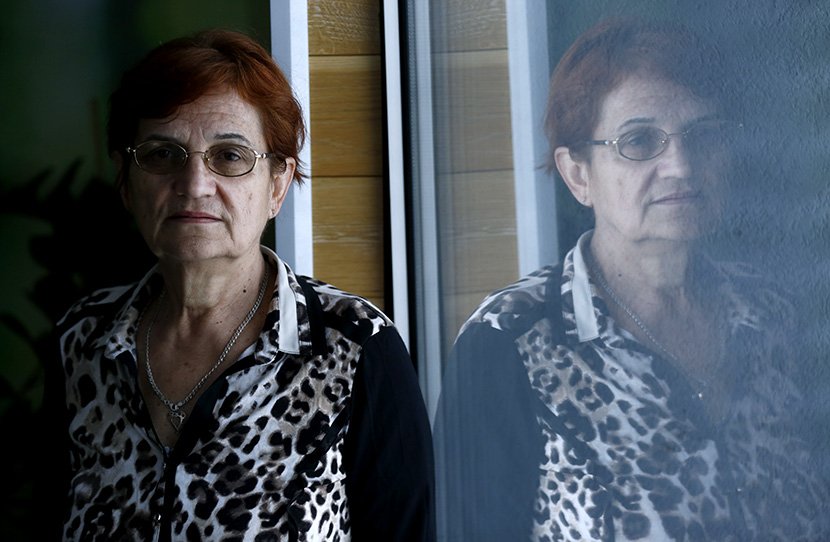Judge Danica talks about Racak case: "Walker destroyed Serbs in Kosovo, it was all a fraud"

Exactly 22 years ago, an armed conflict took place between the Serbian police, which carried out a lawful operation, and members of the KLA ("Kosovo Liberation Army") in the village of Racak. During the clash, 40 Albanian terrorists were killed. However, the head of the OSCE verification mission, William Walker, claimed that the Serbian police carried out a massacre of innocent Albanian civilians.
That served as the reason to start the NATO bombing of our country. After two decades and two years, Danica Marinkovic, at the time the head of an investigating team of the District Court in Pristina and the first to arrive in Racak to inspect the scene, tells Telegraf.rs that Walker is an American spy and a Kosovo butcher, who destroyed the Serb people in Kosovo.
She notes even after 22 years that everything was a clear fraud that served as an excuse to attack Serbia.
"Nothing happened the way Walker said. It was all his premeditated plan, with the support of Western powers. The idea was to present Racak as a massacre of innocent civilians and for that to serve as a trigger for the (NATO) bombing," Danica explained.
The autopsies began on January 19, 1999. Forensic experts from Belgrade, Novi Sad, Nis and Pristina, two Belarus experts and two representatives of the OSCE mission all took part. A Finnish team of forensic experts joined the autopsies on January 22.
"All the victims died from firearms wounds. There was no effect or traces of torture on them. There were no executions, mutilations, any kind of torture, or point blank shootings. The average age of those killed was about 45 years," says Danica.
The Finnish team agreed with the autopsy results.
However, their leader, Helena Renta, refused to sign it, saying she would do so when she came to Pristina again.
"After two (months), on March 17, 1999, Renta held a press conference in Pristina. She called the killings of ethnic Albanians a 'crime against humanity'. She denied Serb reports that these were combatants, and claimed that they were all in civilian clothes. 'Probably' and 'most likely' were words used frequently during her presentation," says Judge Marinkovic.
The NATO bombing of the Federal Republic of Yugoslavia (SRJ, Serbia and Montenegro) began based on that statement, eight days later, on March 24.
Nine years after that, in 2008, in her memoirs, Helena Renta said that she wrote the report under pressure from the head of the OSCE mission in Kosovo, William Walker, and the Ministry of Foreign Affairs of Finland. She admitted that in the winter of 1999, Walker asked her to present the whole case as a Serbian crime.
William Walker denied these statements made by Helena Renta. To make things even sadder, a monument to Walker has been erected in Pristina.
Danica Marinkovic was the first to arrive in Racak
The armed conflict took place on January 15, but Danica Marinkovic and the rest of the investigating team managed to enter the village only on the third day because they were being shot at from the surrounding hills duringn the previous two days.
In Racak, they first found a large quantity of weapons, hand grenades, boxes of ammunition, military uniforms, bags full of weapons.
"We sketched, recorded and listed it all, and then loaded it into a truck. It was immediately clear to me that Racak was a stronghold of the KLA, and not a village of innocent civilians, as Western powers later presented it," said Danica.
Associated Press and Reuters crews recorded everything Danica saw and wrote in her report. This footage, however, has never been broadcast anywhere.
"When I was later called to testify about Racak, I mentioned the names of all the journalists and camera people who went with me, and asked that they be called to testify, but that never happened. The footage simply disappeared," said Danica.
As soon as she saw the bodies, it was immediately clear to her that an armed confrontation had taken place, and that any possibility of torture was ruled out.
"It was clear that they were Albanian terrorists because they were wearing military insignia, boots, military belts, pants and jackets. After a search of the rest of the village conducted later, we came across the KLA headquarters, a barracks with bombs, hand grenades, ammunition. We even found a notebook with a schedule of guard duty," Danica recalls every detail she saw.
Judge Marinkovic, meanwhile, has been expelled from Pristina.
"It happened after the signing of the Kumanovo agreement. I received information that I should leave Pristina because I would be the first to be arrested. I left, but first I photocopied all the documentation I had. About Racak and other events in Kosovo and Metohija, which I witnessed. Two days after I left Pristina, KFOR members, accompanied by Albanian terrorists, broke into my office and were quite unhappy that they did not find me there. They told me at the time they would skin me alive once they do find me," said Danica.
Serving justice
Until 2005, Serbia waited for justice to be served. Then, Marinkovic received a call from The Hague to testify about the Racak case.
"I prepared the testimony directly with Slobodan Milosevic, who was charged with Racak. I went to his detention cell every day. He was stunned by the documentation that I preserved. Although I was able to refute many counts of the indictment against him, the court did not allow me to do so. I could only testify about Racak. And we took that down. Since my testimony, the words 'Racak massacre' were never mentioned again," Danica stressed out.
Unable to reconcile himself with her testimony, Prosecutor (Geoffrey) Nice went to Pristina to find evidence and witnesses against her statements.
"He was angry, he even tried to plant a photo of a hill and a tree on it. And under the tree, the corpses of a child and a woman. I looked at the photo and saw that the ground was dry in the part where the corpses were. I saw green grass and leaves on the tree. I looked at him and said that the 'Racak case' happened on January 15, that there was mud and snow everywhere and that there could not have been any grass and leaves in January," she remarked.
At that point, the International Tribunal dismissed the charges against Serbian generals regarding Racak.
"Also, I had a list of the 40 dead who were identified, and the indictment says that 45 innocent villagers were killed. When we compared the list, only five names matched. They threw in the names randomly. If we hadn't proved the truth about Racak then, who knows what else would have happened to Serbia," the judge said with trepidation in her voice.
Pristina politicians were in Racak today
All Albanian politicians gathered in Racak today to mark the anniversary of the crime which Pristina claims was committed against civilians, while the Serbian side claims that the victims were terrorists of the so-called KLA who were not wearing uniforms.
The leader of the Democratic Party of Kosovo, Enver Hoxhaj, said on that occasion that the former leaders of the so-called KLA, Hashim Thaci, Kadri Veseli, as well as Jakup Krasniqi and Rexhep Selimi are currently absent - but would leave the Hague court with their names cleared, Tanjug writes, citing Ekonomija Online.
The leader of the Alliance for the Future of Kosovo, Ramush Haradinaj, said in front of a memorial in Racak that "freedom has a name and that name is Racak."
The leader of the Self-Determination Movement, Albin Kurti, and the acting president were also in Racak. President of the Provisional Institutions of Kosovo Vjosa Osmani said that without justice for Serbian crimes in Kosovo, there can be no lasting peace.
The US Ambassador to Pristina, Philip Kosnett, took to Twitter to announce that his country stands with Kosovo on the day of remembrance of the victims from Racak.
On January 15, 1999, in the village of Racak, about 40 kilometers from Pristina, 45 Albanians were allegedly killed by the Serbian police. That clash was used as the reason to launch the NATO bombing of Serbia, based on the statements of the head of the OSCE mission in Kosovo, William Walker.
Video: Vucic: Albanians have rejected the request to carry out excavations in Kosovo and Metohija, where we believe Serb victims to be buried
(Telegraf.rs)
Video: Svaki fotograf ima svoju priču: Brajan Rašić otvorio dušu
Telegraf.rs zadržava sva prava nad sadržajem. Za preuzimanje sadržaja pogledajte uputstva na stranici Uslovi korišćenja.

